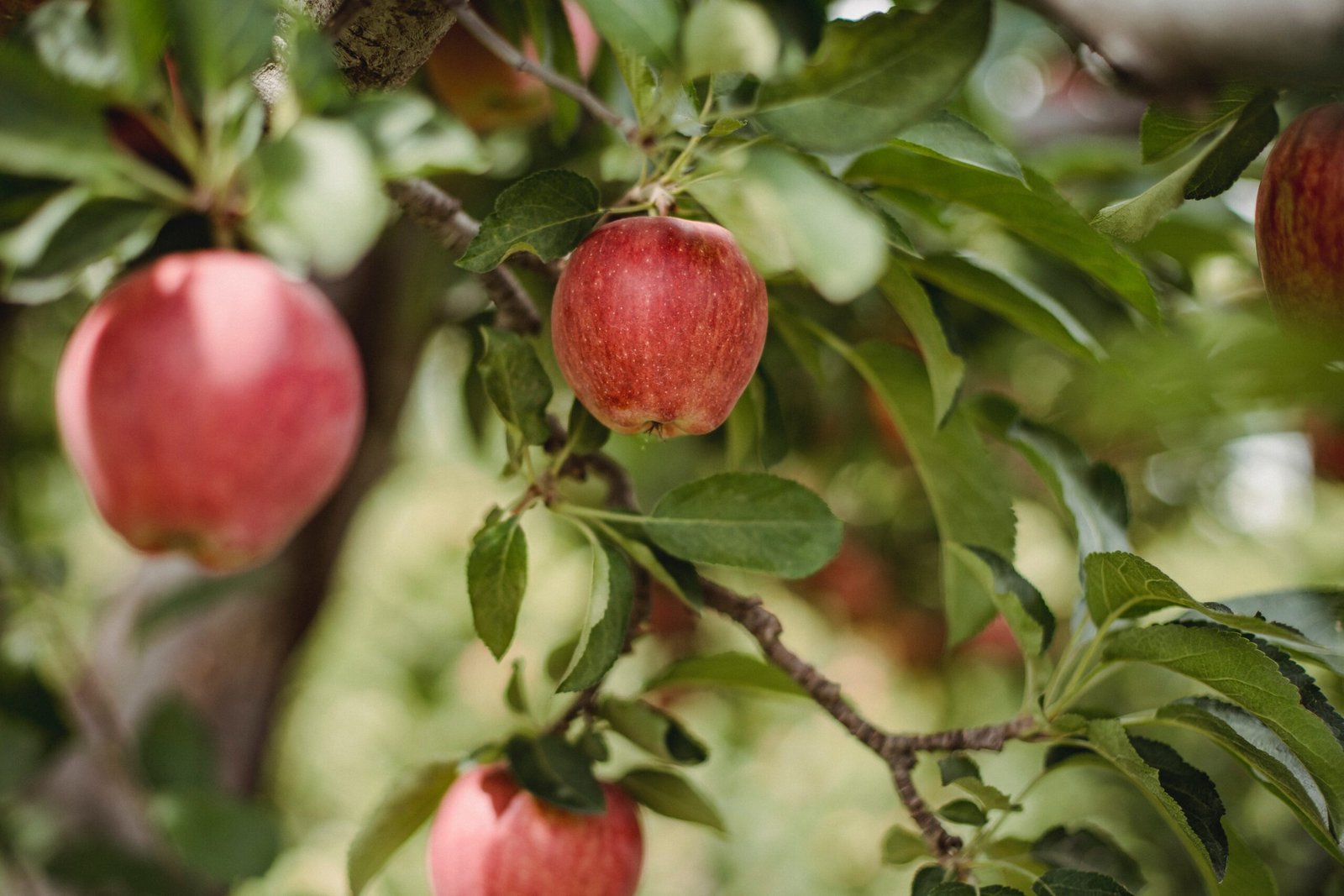
Apple trees (Malus domestica) are a beloved and iconic fruit tree in the UK, providing delicious and versatile fruits throughout the year. They are generally easy to grow and look after however to ensure the health and productivity of apple trees, proper pruning is essential. Pruning apple trees in the UK requires a considered approach and it is essential to understand tree’s growth patterns and specific needs. This article will explore how and when to prune apple trees in the UK for the best growth and fruit production.
Understanding Apple Tree Growth Habits:
Before delving into pruning techniques, it’s important to understand the growth habits of apple trees. Apple trees produce fruit on spurs, which are short, stubby branches that form on older wood. Pruning should aim to balance fruit production and tree health by removing dead, diseased, and overcrowded branches while encouraging the growth of new spurs.
1. Reasons for Pruning Apple Trees:
You should prune apple trees for the following reasons:
i. Encourage Air Circulation: Proper pruning opens up the tree canopy, allowing better air circulation and reducing the risk of fungal diseases.
ii. Promote Sunlight Penetration: Thinning out branches allows sunlight to reach all parts of the tree, promoting even fruit development.
iii. Remove Diseased and Dead Wood: Pruning helps eliminate diseased or dead branches, preventing the spread of infections and supporting the overall health of the tree.
iv. Shape the Tree: Pruning allows you to shape the tree for better structure, making it easier to manage and harvest.
v. Enhance Fruit Production: By removing certain branches, you can encourage the development of new spurs that will bear fruit in the coming years.
2. Tools Needed for Pruning:
Before you begin, gather the necessary tools for the job:
i. Pruning Shears: Essential for making clean cuts on small branches and spurs.
ii. Loppers: Suitable for cutting thicker branches that pruning shears cannot handle.
iii. Pruning Saw: Useful for cutting larger branches.
iv. Pole Pruner: For reaching high branches without using a ladder.
v. Protective Gear: Wear gloves, safety glasses, and a sturdy hat to protect yourself while pruning.
3. When to Prune Apple Trees:
The best time to prune apple trees in the UK is during the dormant season, which typically occurs in late winter or early spring (January-March). Pruning during this time minimizes stress on the tree and reduces the risk of disease transmission. Aim to prune before new growth begins but after the coldest part of winter has passed.
4. How to Prune Apple Trees:
Let’s explore the step-by-step pruning techniques for apple trees:
i. Remove Dead and Diseased Wood: Start by inspecting the tree for dead, diseased, or damaged branches. Cut them back to the nearest healthy wood, making clean cuts at a slight angle.
ii. Thin Out Overcrowded Branches: Identify branches that are growing too closely together or crossing each other. Selectively remove some of these branches to open up the canopy and allow more light to reach the interior of the tree.
iii. Prune for Structure: Aim to create an open-centre or modified central leader structure for your apple tree. This involves removing the central leader and encouraging the growth of lateral branches to create a well-balanced canopy.
iv. Prune to Encourage Fruit Production: Look for older branches with few or no spurs. These branches may have reduced fruiting potential, so remove them to stimulate the growth of new branches and spurs.
v. Be Mindful of Water Sprouts: Water sprouts are vigorous, vertical shoots that grow straight up from the branches. While it’s essential to thin out some of them, avoid over-pruning, as they can develop into fruit-bearing spurs.
vi. Seal Larger Wounds: If you make larger cuts, such as removing substantial branches, consider using a pruning sealant to protect the exposed area from pests and diseases.
5. Additional Tips:
Avoid Over-Pruning: Over-pruning can stress the tree and reduce fruit production. Aim to remove no more than 20-30% of the tree’s canopy in a single season.
Clean Your Tools: Before pruning, sanitize your tools with a disinfectant to prevent the spread of diseases between cuts.
Avoid Pruning in Wet Conditions: Pruning in wet weather can increase the risk of disease transmission. Choose a dry day for the task.
Conclusion:
Pruning apple trees in the UK is a vital practice to maintain healthy, productive trees. Understanding the growth habits of apple trees, along with proper timing and techniques, will lead to a bountiful harvest of delicious apples year after year. By pruning during the dormant season, removing dead and diseased wood, thinning out overcrowded branches, and encouraging new spur growth, you’ll promote better air circulation, sunlight penetration, and overall tree health. Follow these guidelines, and your apple tree will reward you with an abundance of luscious fruit for many seasons to come.

Leave a Reply